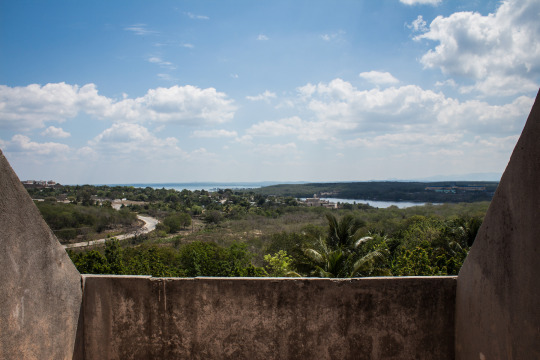#us beer industry market share
Explore tagged Tumblr posts
Text
Indian Beer market analysis 2027

India's wine market is evolving, with a dynamic beer market overview revealing substantial growth. The beer market's current vitality hints at a promising and robust future.
#beer industry market share#beer industry marketing#global beer industry market share#us beer industry market share#Beer market Overview#Beer industry market report#Beer market trends#Beer market volume#Beer market Growth#Beer Market Future
0 notes
Text
Dow promised to turn sneakers into playground surfaces, then dumped them in Indonesia

Dow Chemicals plastered Singapore with ads for its sneaker recycling program, promising to turn old shoes into playground tracks. But the shoes it collected in its “recycling” bins were illegally dumped in Indonesia. This isn’t an aberration: it’s how nearly all plastic recycling has always worked.
If you’d like an essay-formatted version of this post to read or share, here’s a link to it on pluralistic.net, my surveillance-free, ad-free, tracker-free blog:
https://pluralistic.net/2023/02/26/career-criminals/#fool-me-twice-three-times-four-times-a-hundred-times
Plastic recycling’s origin story starts in 1973, when Exxon’s scientists concluded that plastic recycling would never, ever be cost-effective (#ExxonKnew about this, too). Exxon sprang into action: they popularized the recycling circular arrow logo and backed “anti-littering” campaigns that blamed the rising tide of immortal, toxic garbage on peoples’ laziness.
https://pluralistic.net/2020/09/14/they-knew/#doing-it-again
Remember the campaign where an Italian guy dressed like a Native American shed a single tear as he contemplated plastic litter? Funded by the plastic industry, as a way of shifting blame for plastic waste from the wealthy, powerful corporations who lied about plastics recycling to the individuals who believed their lies:
https://www.chicagotribune.com/opinion/commentary/ct-perspec-indian-crying-environment-ads-pollution-1123-20171113-story.html
When I was a kid in Ontario, we had centralized, regulated, reusable bottle depots — beer and soda bottles came in standard sizes, differentiated by paper labels that could be pressure-washed off. When you were done with your bottle, you returned it for a deposit and it got washed and returned to bottlers to be refilled again and again and again.
After intense lobbying from soda companies, brewers and the plastic industry, that program was replaced with curbside “blue boxes” that promised to recycle our plastic waste. 90% of the plastics created has never been — and will never be — recycled. Today, the plastic industry plans on tripling the amount of single-use plastic in use worldwide:
https://pluralistic.net/2022/04/26/plastic-fatalistic/#recycled-lies
You know those ads from companies like Bluetriton (formerly “Nestle Waters”) that promise that your single-use plastic bottles are “100% recyclable…and can be used for new bottles and all sorts of new, reusable things?”
Bluetriton is a private equity-backed rollup that has absorbed most of the bottled water companies you’re familiar with, including Poland Spring, Pure Life, Splash, Ozarka, and Arrowhead. When they were sued in DC for making false claims about their “recyclable” water-bottles, their defense was that these were “non-actionable puffery.” According to Bluetriton, when it described itself as “a guardian of sustainable resources” and “a company who, at its core, cares about water,” it was being “vague and hyperbolic.”
https://pluralistic.net/2022/04/26/plastic-fatalistic/#recycled-lies
With this high standard for plastic recycling, Dow’s Singapore scam shouldn’t come as a surprise, but it seems to have surprised the government of Singapore. Writing for Reuters, Joe Brock, Yuddy Cahya Budiman and Joseph Campbell describe how they caught Dow red-handed:
https://www.reuters.com/investigates/special-report/global-plastic-dow-shoes/
The method is actually pretty straightforward: Reuters hid tracking devices in cavities in the soles of sneakers, dropped them in one of Dow’s collection bins, and then followed them. The shoes were passed onto Dow’s subcontractor, Yok Impex Pte Ltd, who sent them hopping from island to island throughout Indonesia, until they ended up in junk-markets.
Not all the shoes, though — one pair was simply moved from Dow’s collection bin to a donation bin at a Singaporean community center. Of the 11 pairs that Reuters tracked, not one ended up at a recycling facility. So much for Dow’s slogan: “Others see an old shoe. We see the future.”
Dow blamed all this on Yok Impex, but didn’t explain why its “recycling” program involved a company whose sole trade is exporting used clothing. Dow promised to cancel its deal with Yok Impex, but Yok Impex’s accountant told Reuters that the deal would be remain in place until the end of the contract. Yok Impex, meanwhile, shifted the blame to the low-waged women who sort through the clothing donations it takes in from across Singapore.
Indonesia bans bulk imports of used clothes, on the grounds that used clothes are unhygenic, displace the local textiles industry, and shipments contain high volumes of waste that ends up in Indonesian incinerators, landfills and rivers.
In other words, Singaporeans thought they were saving the planet by putting their shoes in Dow bins, but they were really sending those shoes on a long journey to an unlicensed dump. Dow enlisted schoolchildren in used-shoe collection drives, making upbeat videos that featured students like Zhang Youjia boasting that they “contributed 15 pairs of shoes.”
Dow does this all the time. In 2021, Dow’s “breakthrough technology to turn plastic waste into clean fuel” in Idaho was revealed to be a plain old incinerator:
https://www.reuters.com/investigates/special-report/environment-plastic-oil-recycling/
Also in 2021, in India, a Dow program to “use high-tech machinery to transform the [plastic from the Ganges] into clean fuel” was revealed to have ceased operations — but was still collecting plastic and promising that it was all being turned into fuel:
https://www.reuters.com/article/us-environment-plastic-insight-idUSKBN29N024
Dow operates a nearly identical “shoe recycling” program in neighboring Malaysia, and did not return Reuters’ requests for comment as to whether the shoes collected for “recycling” in the far more populous nation were also being illegally dumped offshore.
The global business lobby loves the idea of “personal responsibility” and its evil twin, “caveat emptor.” Its pet economists worship the idea of “revealed preferences,” claiming that when we use plastic, we may claim that we don’t want to have our bodies poisoned with immortal, toxic microplastics, that we don’t want our land and waters despoiled — but we actually love it, because otherwise we’d “vote with our wallets” for something else.
The obvious advantage of telling people to vote with their wallets is that the less money you have in your wallet, the fewer votes you get. Companies like Dow have used their access to the capital markets (a fancy phrase for “rich people”) to gobble up their competitors, eliminating “wasteful competition” and piling up massive profits. Those profits are laundered into policy — like replacing Ontario’s zero-waste refillable bottle system with a “recycling” system that sent plastics to the ends of the Earth to be set on fire or buried or dumped in the sea.
The ruling class’s pet economists have a name for this policy laundering: they call it “regulatory capture.” Now, when you hear “regulatory capture,” you might think about companies that get so big that they are able to boss governments around, with the obvious answer that companies need to be regulated before they get too big to jail:
https://doctorow.medium.com/small-government-fd5870a9462e
But that’s not how elite economists talk about regulatory capture: for them, capture starts with the very existence of regulators. For them, any government agency that proposes to protect the public from corporate fraud and murder inevitably becomes an agent of the corporations it is supposed to rein in, so the only answer is to eliminate regulators altogether:
https://doctorow.medium.com/regulatory-capture-59b2013e2526
This nihilism lets rich people blame the rest of us for their sins: “if you didn’t want your children to roast or freeze to death in the climate emergency, you should have sold your car and used the subway (that we bribed your city not to build).”
Nihilism is contagious. Think of the music industry: before Napster, 80% of the music ever recorded was not for sale, banished to the scrapheap of history and the vaults of record companies who paid farcically low sums to their artists.
During the File Sharing Wars, listeners were excoriated for failing to pay for music — much of which wasn’t for sale in the first place. But today, fans overwhelmingly pay for Spotify, a streaming service that notoriously pays musicians infinitesimal sums for their work.
Spotify is a creature of the Big Three labels — Sony, Universal and Warner — who own 70% of all the world’s recorded music copyrights and 65% of all the world’s music publishing. The rock-bottom per-stream prices that Spotify pays were set by the Big Three. Why would the labels want less money from Spotify?
Simple: as co-owners of Spotify, they make more money when Spotify pays less for music. Musicians have a claim on the money they take out of Spotify as royalties — but dividends, buybacks and capital gains from Spotify are the labels’ to use as they see fit. They can share that bounty with some artists, all artists, or no artists.
Not only that, but the Big Three’s deal with Spotify includes a “most favored nation” clause, which means that the independent artists who aren’t under Sony/UMG/Warner’s thumb have to take the rock-bottom rate the Big Three insisted on — likewise the small labels who compete with the Big Three. The difference is that none of these artists and small labels have massive portfolios of Spotify stock, nor do they get free advertising on Spotify, or free inclusion on hot Spotify playlists, or monthly minimum payouts from Spotify.
The idea that we shop at the wrong kind of monopolist in the wrong way is a recipe for absolute despair. It doesn’t matter whether you listen to music with the Big Tech-owned monopoly service (Youtube) or the Big Content-owned monopoly service (Spotify). The money you hand over to these giant companies goes to artists the same way that the sneakers you put in a Dow collection bin goes to a recycling plant.
Think of the billions of human labor hours we all spent washing and sorting our plastics for a recycling program that didn’t exist and will never exist — imagine if we’d spent that time and energy demanding that our politicians hold petrochemical companies to account instead.
At the end of Break ’Em Up, Zephyr Teachout’s outstanding 2020 book on monopolies, Teachout has some choice words for “consumerism” as a theory of change. She writes that if you’re on your way to a protest against a new Amazon warehouse but you never make it because you waste too much time looking for a mom-and-pop stationers to sell you a marker to write your protest sign, Amazon wins:
https://pluralistic.net/2020/07/29/break-em-up/#break-em-up
The problem isn’t that you shop the wrong way. Yes, by all means, support the creators and producers you care about in the way that they prefer, but keep your eye on the prize. Structural problems don’t have individual solutions. The problem isn’t that you have chosen single-use plastics — it’s that in our world everything for sale is packaged in single-use plastics. The problem isn’t that you’ve bought a subscription to the wrong music streaming service — it’s that labels have been allowed to buy all their competitors, creators’ unions have been smashed and degraded, and giant accounting scams by big companies generate minuscule fines.
The good news is that after 40 years of despair inducing regulatory nihilism and “vote with your wallet” talk, we’re finally paying attention to systemic problems, with a new generation of trustbusting radicals working around the world to end corporate impunity.
Dow is a repeat offender. A repeat, repeat offender. Chrissakes, they’re the linear descendants of Union Carbide, the company that poisoned Bhopal:
https://en.wikipedia.org/wiki/Bhopal_disaster
They shouldn’t be trusted to run a lemonade stand, let alone a “recycling” program. The same goes for Big Tech and Big Content company and the markets for creative labor. These companies have repeatedly demonstrated their unfitness, their habitual deception and immorality. These companies have captured their regulators, repeatedly, so we need better regulators — and weaker companies.
The thing I love about Teachout’s book is that it talks about what we should be demanding from our governments — it’s a manifesto for a movement against corporate power, not a movement for “responsible consumerism.” That was the template that Rebecca Giblin and I followed when we wrote Chokepoint Capitalism, our book about the brutal, corrupt creative labor market:
https://chokepointcapitalism.com/
We have a chapter on Spotify (multiple chapters, in fact!). For our audiobook, we made that chapter a “Spotify Exclusive” — it’s the only part of the book you can get on Spotify, and it’s free:
https://pluralistic.net/2022/09/12/streaming-doesnt-pay/#stunt-publishing
Next Thu (Mar 2) I’ll be in Brussels for Antitrust, Regulation and the Political Economy, along with a who’s-who of European and US trustbusters. It’s livestreamed, and both in-person and virtual attendance are free. On Fri (Mar 3), I’ll be in Graz for the Elevate Festival.
[Image ID: A woman kneeling to tie her running shoe. She stands on a background of plastic waste. In the top right corner is the logo for Dow chemicals. Below it is the Dow slogan, 'Others see an old shoe. We see the future.']
919 notes
·
View notes
Text

familybusinessbeerco: FBBC Friends and Family BIG NEWS!!! We are thrilled to share that our beer has been making its way across Austin, San Antonio, and Houston as of last month! Our goal is to spread our beer far and wide, reaching every Texan and beyond. By early 2025, we aim to have our presence established throughout Texas! As we continue our search for the perfect taproom location in Austin, please note that we will be temporarily closing our Dripping Springs location beginning today while we search for a new spot closer to town. Our focus is set on efficiently distributing our products, ensuring that we deliver the freshest FB beer to our valued partners both on- and off-premises. You can expect to see us more frequently in retail chains, conducting in-store demonstrations and participating in local craft beer festivals. Additionally, we are in the process of reintroducing our seasonal rotations and rotating IPA series, so be on the lookout for these offerings in the market. We are dedicated to advocating for legislative reforms in the craft beer industry to benefit Texas breweries. With great excitement, we anticipate the future of Family Business as we venture into new markets with our acclaimed flagship beers and seasonal brews! 🍻 (x)
75 notes
·
View notes
Text
Yakima Chief Hops (YCH) and India Hops collaborate to release Strata HyperBoost.
https://bit.ly/4gmoWM9 image courtesy Yakima Chief Hops (YCH) Press Release YAKIMA, WA … Yakima Chief Hops (YCH), a global leader in innovation, has joined forces with Oregon-based Indie Hops to introduce a new offering to brewers: Strata® HyperBoost™. This marks the first collaboration between the two hop suppliers, combining Indie’s well-known and much-loved Strata variety with YCH’s cutting-edge HyperBoost formula, an exclusive flowable hop extract only from YCH. “Indie Hops has always approached customers with a mutual interest in making great beer, so it’s natural that Indie Hops and Yakima Chief Hops have entered into a product collaboration to bring brewers the first Strata HyperBoost,” said Ryan Hopkins, CEO of Yakima Chief Hops. “Indie has been a great partner to the brewing industry in developing hop varieties that bring new and unique flavors to brewers, and they’ve always been a strong advocate for family-owned and operated farms.” Indie Hops CEO Jim Solberg shared his enthusiasm for the project, stating, “Collaboration is a big deal between craft brewers and can be a good thing between hop suppliers as well. We’re stoked to be collaborating with YCH to pair our standout variety Strata with their exciting new cold-side flowable HyperBoost. It’s good for us, good for YCH, and great for brewers!” Strata, celebrated for its unique aroma profile of passion fruit, grapefruit, strawberry, and wafting cannabis, has become a favorite among modern brewers. Now, with HyperBoost’s concentrated oil formula, brewers can effortlessly incorporate Strata’s flavor profile into beer. Designed for maximum efficiency, HyperBoost simplifies the brewing process by allowing brewers to pour the product directly into fermenters, with no additional preparations. YCH’s Research and Development team created HyperBoost in response to brewers' demand to have a highly flowable, concentrated hop product, that would enhance beer flavor and aroma with true-to-style hop attributes. Brewers using HyperBoost have reported significant gains in beer yield, with some achieving increases of up to 10%! HyperBoost can be used to replace a portion of the hop bill or as an addition to amplify the beer’s overall sensory impact. “There is a dizzying number of hop oil extracts in the market now. One key factor that attracted us to YCH HyperBoost for our variety Strata is that HyperBoost is derived solely from hops,” said Solberg. “Real hops grown by real people for brewers to excite customers who really like hoppy beer." Strata HyperBoost is an essential ingredient for brewers at the forefront of innovation, delivering remarkable flavor to beer enthusiasts. Available in limited quantities, Strata HyperBoost comes in 100g easy-to-pour bottles for seamless use, and is available from YCH or Indie Hops. To expand access to Strata’s remarkable characteristics, YCH will also offer Strata T90 pellets. For Strata HyperBoost and pellets, contact Indie Hops, your YCH sales representative, or order through the YCH customer portal. ### Yakima Chief Hops YCH is a 100% grower-owned global hop supplier with a mission to connect brewers with family hop farms. Operating for over 30 years, we have become leaders in innovation, quality, and customer service. We are a resource for brewers, providing industry-leading research and products. We are advocates of sustainability and meaningful social causes, working to support the communities around us. https://www.yakimachief.com/ from Northwest Beer Guide - News - The Northwest Beer Guide https://bit.ly/4gaxVjC
2 notes
·
View notes
Text
The Nuclear City
The market, though small, was as lively as any I saw in Cuba. We walked from stall to stall, past vendors selling tropical fruit and sacks of rice. Behind one table a woman sat on the curb, a sack between her thighs, tapping a sieve like an old-timey pan-handler as she separated insects from grains of rice. I bought a portion of fresh, sticky mango slices… realising too late that there was nowhere to wash my hands clean after.

Ciudad Nuclear, Cuba as seen from the 14th floor rooftop of an unfinished apartment block.
The sun was beating down hard so the four of us ducked into the welcome shelter of a bar. We were the only customers; it was dark inside, cool, with flies buzzing lazily around the slow-moving ceiling fan. We ordered a round of beers – Cuban Bucaneros – and I held the cold can up to my baked skull, my temples, then rolled it between my hands allowing the frosty condensation to de-gunk my fruit-sticky fingers. I looked out at the market: an island of humanity, while all around it rose the empty shells of unfinished residential blocks. This handful of stalls was now the social heart of a city once built for thousands, and these people the last stubborn lives to remain amongst the ruins of Ciudad Nuclear.

Thousands of apartments built for construction workers and Soviet nuclear engineers now sit abandoned.
Back in 2014 I shared an article about my visit to an unfinished nuclear power plant in Cuba. It was no more than a concrete shell by the time I saw it, with a dome that made it look almost like a temple, left abandoned on the Caribbean coast.
The site had been built with Soviet money and know-how, and was to be accompanied by a brand new city for power plant workers. The Chernobyl reactors in Ukraine had the workers’ city at Pripyat; the Lithuanian reactor at Visaginas, likewise, had a model socialist city raised up almost overnight in its shadow; and here at Juragua in Cuba, the Soviets helped build ‘Ciudad Nuclear’: in English, simply, ‘Nuclear City.’
The USSR began working on the Cuban nuclear power plant in 1976, and Ciudad Nuclear was opened on 13th October 1982, to house the influx of Soviet scientists and engineers. Located six miles from the plant it was to feature 4,200 homes but the Cuban plant was never finished. Construction ground to a halt in 1989, as the funding dried up and the Soviet Union teetered on the brink of collapse. The intended workers’ city was left in limbo as a result: half finished, only part inhabited, an unsustainable cluster of concrete dwellings on a remote stretch of the Cuban shoreline.

Ciudad Nuclear, Cuba: view from the balcony of a spacious residential complex that never got finished.

A handful of residents still live in Ciudad Nuclear surrounded on all sides by empty blocks, and with the unfinished power plant just visible on the horizon.
I made the journey down to Juragua with friends. We hired a car in Havana, and drove for several hours to reach the site on the south side of the island. We slept in a casa nearby, a sweet little place down by the water’s edge, but on the day of our intended visit to the plant we found the place crawling with security guards. Later we’d come back, and we’d find another way inside the unfinished Juragua NPP – but first we spent an afternoon in Ciudad Nuclear.

A Cuban turkey vulture circles over the quiet streets of Ciudad Nuclear.
Ciudad Nuclear is a peculiar place. I want to call it a ‘ghost town,’ but that wouldn’t be entirely accurate. The handful of citizens who remain here are, for the most part, commuters. Some drive 20 miles to work in Cienfuegos, a larger town with a busy port and industrial sector. Not a lot of Cubans have their own transport though, which means that Ciudad Nuclear – an unfinished, out-of-the-way conurbation with little going on in terms of entertainment or employment – is doomed to a slow depopulation.
Leaving the market, we turned a corner and quickly found ourselves alone. Down the length of Ciudad Nuclear’s main street, only two parked cars and a couple of distant pedestrians were visible. Rounding a corner to the next street we met a small family and a donkey, but the rows of apartment blocks behind them looked desolate and bare.

Empty spaces inside a tower block planned for luxury apartments.

Poetry by José Martí appears on a wall in what might have been intended as a cafeteria.
Save for the occasional sheet flapping in the wind on some third-floor washing line, most of the buildings here seemed to be uninhabited; many looked like they had never been finished, their faded pastel exteriors wrapped around empty cement boxes. Inside one large ground floor space (a shop or a café?) I found a wall decorated with a verse by José Martí, Cuba’s most beloved revolutionary poet:
Cuba no anda de pedigueña Por el mundo, anda de hermana Al salvarse, salva América No le fallará, porque ella No le falla a América.
Poetry always loses a little in translation, but in English it means something like this:
Cuba does not go around the world as a beggar but as a sister By saving herself, she saves the Americas She will not fail, because she will not fail the Americas.

Looking east from Ciudad Nuclear, where a narrow strait connects the Caribbean to the inland Bay of Cienfuegos.
Some of the buildings around Ciudad Nuclear stood near to collapse. I looked inside a few, though there wasn’t much to see. The risk-reward ratio didn’t seem weighted in my favour, so for the most part when I saw ‘Derrumbe’ – ‘Collapse’ – written across a building, I kept away.
Heading back towards the centre we passed a naked tower block, the tallest we’d seen so far. Across its side were painted the words, ‘¡¡Socialismo o Muerte!!’ though it felt like an oddly subversive slogan, given the context. Socialism or Death. This place seemed to have a little bit of both.


Socialism or Death in Ciudad Nuclear.
Gazing up at that graffitied ruin, I decided I wanted to climb it – to see how Ciudad Nuclear looked from the top. The stairs inside were intact, but there was little else to see inside the 14-floor skeleton; nothing but concrete all the way up. Reaching the top, I walked out of the stairwell onto an open-plan level that fell abruptly away at the edge; no windows, no handrail, just a sudden drop to the street.
Something flapped noisily nearby and I turned, in time to see a large dark bird take flight from its concrete perch on the fourteenth floor balcony. Later I’d be told it was a vulture.
Above the top end of the stairwell, a square hole opened to the rooftop and the sky. It took a bit of a scramble to get up there – balancing on a concrete bannister, catching hold of the ledge above and pulling myself up to the building’s summit – but it was worth the work.




Nature is already reclaiming the rooftops of Ciudad Nuclear, Cuba.

Looking out across the Bay of Cienfuegos from a Ciudad Nuclear rooftop.
Stood up there in the sweltering sun, I traced the shoreline curving into the distance: the beach a ribbon of gold between the water and the forest. Below me the empty streets and unfinished buildings of Ciudad Nuclear fanned out in grid formation, a model city that never quite made it off the drafting table. Meanwhile along the coast, an abandoned 16-floor reactor building rose from the forest like some ancient temple ruin: a concrete mausoleum for the Cuban-Soviet nuclear programme.

Designed to provide 4,200 homes, this is how the city looks today.


The building that started it all: six miles from the city sits the concrete shell of the Juragua Nuclear Power Plant.
-
Text and photo by Darmon Richter [adapted with permission from an article at [EX UTOPIA]
10 notes
·
View notes
Text
What to do with 10 trillion dollars
I spent way too much time actually answering a reddit question of "How would you spend 10 trillion dollars if you needed to in 20 years. You will die after 20 years." So, I figured I'd share it here.
With only $10 trillion dollars you can't stabilize greenhouse gases or get rid of fossil fuels, which are 13t and 44t respectively. I'm using a variety of sources, so don't expect citations.
I did slightly overpay for things, strategically, partially because I can only imagine doing the things I would do would make it more expensive than it would otherwise be. You'll see.
I'm presuming I don't get assassinated.
What you can do (I did the math) figures are in Billions:
Personal (2.44/10000):
1.44 on remaking 8 games as mid-line AAA games (I chose Legend of Dragoon, FF8, Witcher 1, and the Legacy of Kain series).
.214 on 50 years of housing and buying yourself a $130,000,000 home in NYC. Includes taxes, maintenance, and furniture.
.15 on household staff for 50 years, with at double the normal pay
.000327 to put 3 kids through the best pre-k and best college in the country
.664 setting up each of those 3 kids with their own equivalent home and staff setup
Public Service (4303/10000):
Big one out of the way. 2500bn in lobbying/buying up American politicians to enact structural reforms I want to see. You would think this would be way too much, since the presidential election in 2020 only had 14.4 in it. This amounts to averaging 250 in spending every election cycle, even off-year. I counter with the global commercial banking market having a market cap of 2800 in 2023. The defense industry is almost 480. Health insurance in the US is 1600. This is an expensive, long-drawn fight. This is likely the single most important thing on the list. Anti-corruption measures, labor rights, pro-democracy reforms, including ultimately making it illegal for other people to buy more elections.
a cumulative total of 1803 spent on:
curing the most common cause of blindness worldwide
eradicating polio, rabies, elephantitis, malaria, world hunger, COVID19 issues, Water + Sanitation access, extreme poverty, homelessness in USA, Canada, and UK (I looked for China, Indonesia, Nigeria, Egypt, and Pakistan but couldn't find real numbers),
protecting the Amazon rainforest
Corporate Fixing (5692/10000):
Buying up and changing (converting to Co-Ops, converting to non-profits, dissolving, or something in line with those:
Meta
Amazon
Disney
JP Morgan Chase
Lockheed Martin
Delta
Alphabet
Asda
Tesco
Nike
The Weinstein Company
United Airlines
Shein
EA
BP
Bayer (side-note: they own/are Monsanto now)
De Beers
Vonovia Real Estate Developers
DLE
Ubisoft
Ikea
Shueisha
and Viz Media
It leaves me with 1.4bn left over. I'm comfortable with saying an additional billion would likely be used up administratively as things get a bit more expensive than I thought they would.
Honestly, I could likely blow it on close friends and family who need it. If you have an issue with the house spending being for 50 years instead of 30, that can just be shuffled around a bit to include more people in my personal life to meet the same number.
Leaving me with 470 million to spend elsewhere in the next 20 years. Expensive vacations, nice cars, donating to "smaller" issues as I see worthwhile, giving family and friends money for their ventures/dreams, etc. make me think it wouldn't actually be hard to lose track of that much money in those many years.
Hell, if I want to I can probably spend a million bucks on food a year just for my family. Probably more, if I actively try to do so.

9 notes
·
View notes
Text
Chicano report back on the Puro Pinche Palestina! Show and Night Market

It was a very cold Saturday evening January 20th, 2024. My partner and I arrived at the event about an hour or 2 after it started. We thought when we showed up it would be over. When we got closer to the location, it looked like a full house with cars lined up on both sides of the road. So, as we tried to find a space to park, we finally entered the event, and it was still very active. The 6pm show and night market was organized by Red Star and Bimbos for Liberation in coordination with Tandem, located at 310 Riverside Dr. San Anto, Tx. The purpose of the event was to benefit San Antonio for Justice in Palestine. There was a very diverse crowd in the lot outside socializing and walking around looking at the 25+ vendors and local artists that were out there in solidarity and calling for a ceasefire.

There were several groups huddled around the different log fires they had set up for the cold winter evening. There was also food for sale by Saha, Gorda Bakes, Angel Numb, El Puño y La Mano, WRLD 8, and Slumber Party World created by Callie. You could also hear music coming from the DJ and live bands such as Vintage Pictures, Sacred Games, Optic Arrest, Bitter Critter, Powdered Wig Machine, and RoshII. We got a chance to check out the inside for some food and water. They also sell coffee, beer, and wine. It was comfortable. They had tables, chairs, and couches. They also had picnic tables outside as well. After attending the event it really motivated me to continue to organize. I promised myself I would try to be around more justice seeking people interested in making a positive impact in the world. So, this event was very uplifting because lately I had been feeling isolated. There were some myths or lies that I believe were challenged at the event: 1: No one in San Antonio cares about what is happening in Palestine. Clearly, there were many folks out there in support of the Palestinian people. 2: Chicanos and Africans have no connection to Palestinians.

Statement in solidarity with Palestine!
"So similar are the struggles of Palestinians and Chicanos that in 1980 El Partido Nacional de La Raza Unida sent a delegation to a historic meeting with Palestinian Liberation Organization founder Yasser Arafat. The meeting took place in Lebanon as it was impossible to enter Palestine at that moment. We must recall this meeting and the continued solidarity PNLRU has expressed to our sister and brothers of Palestine who despite facing the advance US funded weaponry and military might of the Zionist occupation nothing can break the iron will and national pride of the Palestinian people, and we see this in the relentless pride Palestinians express from the youngest child to the elderly they all know without a doubt that first and foremost they are Palestinian!

This is an example we cannot ignore here in Aztlan in the “Belly of the Beast” our national unity is challenged relentlessly with so many labels placed on us by this colonizer. The struggles of Palestine and Aztlan are deeply connected in fact the US imposed colonial border separating Aztlan and Mexico has Israeli contractors written all over it. Companies like Elbit, NICE, and Verint Systems have entrenched themselves within the border enforcement industry, which carries significant implications for La Raza. The introduction of drones, surveillance cameras, and sensor systems further militarizes La Frontera Falsa. PNLRU demands a thorough and critical evaluation of the involvement of Israeli security companies in US Mexico border security. This collaboration raises valid concerns about the continued militarization of our border and the potential infringement on human rights. Our stance on this issue doubles down on our support for the Palestinian people’s struggle for self-determination. Both struggles, for Chicano liberation and Palestinian liberation, deserve recognition and steadfast advocacy in the shared fight against oppression and imperialism."
“We felt we both had the same fight. They learned about our struggle that Chicanos were being thrown out of their homeland. So, they invited us on a fact finding mission so we could come back and tell the world that there are two sides to every story.” Rebecca Hill PNLRU-NM

There has been a lot of bad information being spread so it is hard to understand what is happening if you are just following the capitalist media and/or social media and relying on those sources to understand the root/s of the problem/s. Work collectively and do your research. Check out the following:

USA Foriegn Policy/Imperialism
La Raza Unida takes these positions against the Imperialism of the United States of America.
La Raza Unida believes in the self-determination of all people.
La Raza Unida believes in peaceful coexistence.
Indigenous peoples and developing nations must be self-sufficient and not exploited or manipulated.
La Raza Unida believes in international worker solidarity, which Imperialism prevents through competition between countries.
La Raza Unida stands for social change. Imperialism creates dictatorships that repress dissent, social change and self-determination.
USA Occupation Forces International and Domestic (Militant/Police/ICE)
La Raza Unida recognizes the US Military and its police forces as the armed wing of the settler colonizer. We stand in solidarity with all liberation struggles.
The USA armed forces are designed to keep our people terrorized, exploited and controlled.
The USA armed forces take advantage of the dire economic realities of our people with false promises.
USA Veterans experience trauma and betrayal. La Raza Unida supports them in their healing. Their experience can be an asset to the true liberation of our people.
Technology used abroad by the USA military today will be used against Raza tomorrow.
La Raza Unida supports the right for our own people to develop a force to “serve, observe and protect” ourselves.

La Frontera Falsa
La Raza Unida does not recognize the “USA/Mexico” border as legitimate. It was imposed by military invasion and held by occupational forces. Therefore:
No Human being is illegal.
La Raza Unida opposes any militarization of la frontera falsa.
USA immigration policy is designed to enrich the elite through the suffering of Raza and as a weapon against the Chicano people.
The construction or expansion of any physical barrier at la frontera falsa must be opposed.
We oppose the separation of families and the caging of children.
Our Raza, whether Mexicano or CentroAmericano, must be allowed to migrate on their own continent in search of a better life for themselves and their children.
As social workers we also have principles and values we must practice. We must value social, economic, and political justice and never compromise our principle of challenging injustice. Join an organization working for justice today!
2 notes
·
View notes
Text

The Drinky Crow Show #5: “Whale Show” | December 1, 2008 - 12:15AM | S01E02
Well, hello there. It’s the Drinky Crow Show from AdultSwim.com. In this one, Drinky Crow has blown his brains out and needs to find them in order to figure out what happened the night before which caused him to blow his brains out. He finds his brains, and they tell him: He found a pretty gal who had him take him out to sea. Drinky was happy to oblige, thinking perhaps he’ll get his cloaca sniffed. Before he’s able to get to any kind of base a big sea monster gobbles his date up.
Drinky shares this tale of woe to a pub filled with enraptured bar flies. After a night of having his beers paid for by sympathetic-ear-havers, Drinky realizes he can profit off telling his story over-and-over. So he does, with stupid puppets and stuff on a street corner.
His rinky-dink puppet show version of his story gets some attention from a big corporate entity, who buys Drinky’s heartbreak, keeping him and Uncle Gabby on as writers. And that’s where the episode sorta falls apart somewhat. The episode goes on another bizarre flight of fancy where Drinky keeps buying black market brains to keep his scripts fresh, which are now being performed at a Sea World style theme park. The suits encourage the writing partners to appeal to teens and engage in meta-humor. Okay, so it’s episode two (or three counting the pilot [or five, if you’re watching this in production order {which is how the Adult Swim website (adultswim.com) has it}]) and we’re already doing an episode that’s about the show itself?? COME ON!
There’s a part in this where the park show includes a paid promotion from the Navy. My guess is that it was a reference to the fact that Adult Swim often did run ads for the US military, a fact that should piss us all off more than it clearly does. The Navy is also a big enough part of the Maakies-verse that maybe I’m wrong about that, and it’s actually just a coincidence. In a vacuum, the Navy would be the most likely entity to advertise itself in this world. I don’t know, I’m just flashing back to Brak solemnly saying “be an Army of one” and frowning right now. I am denying the world my smile, and that's bad news.
This one is resolved when Drinky happens upon the brains of the sea monster that ate his girlfriend. Absorbing the monsters memories makes him realize that his girlfriend only faked her death for the insurance money. And now I no longer have to talk about this episode (which wasn’t that good, in case it’s clear).
EPHEMERA CORNER:

Metalocalypse - Season Two DVD (December 2, 2008)
It’s important to note every single DVD release, or else I will die.
This one didn’t advertise any extras, but hid everything as Easter Eggs. At least, that’s what I was told via a review from DVD Talk.
MAIL BAG
Fun fact: Drinky Crow is one of the few shows the network openly doesn't like. Quoting the 16th anniversary disillusionment theater marathon: "We are fans of Tony Millionaire’s Maakies comic strip so we tried to turn it into a TV show. Turns out it made more sense as a strip. The Drinky Crow Show 2007"
Those bumps use too much sass mouth for my tastes, but I guess it’s admirable that they can be self-deprecating. I remember they said something about how they shouldn’t’ve commissioned 20 episode seasons from shows like Saul of the Mole Men. Very class LESS thing for them to do. But considering that they feed into the military-industrial complex, as noted in the above review, this should not be surprising.
2 notes
·
View notes
Text
The United States beer market size reached US$ 101.7 Billion in 2022. Looking forward, IMARC Group expects the market to reach US$ 118.7 Billion by 2028, exhibiting a growth rate (CAGR) of 2.8% during 2023-2028. Beer refers to a fermented alcoholic beverage that is produced from malted grains, such as barley, water, hops, and yeast.
2 notes
·
View notes
Text
Make Me Smile
Sometimes the best marketing campaigns don’t look at all like a campaign as we know them. Normally, they have old-school analog elements (like TV, print, and so forth) and/or digital elements (like social media, e-mail, mobile, etc.). But when you are the industry kingpin like Coca-Cola is, you can focus on far more than just padding sales, profits, and market share.
You get to do feel-good things that reinforce the brand in ways hard to imagine. You also get to break all the rules.
And that is exactly what Coca-Cola is doing for the second year in a row with its short film Westside’s Finest, directed by Kenya Barris. The film perfectly executes what is called portfolio marketing, with a sequence of vignettes set from 1975 through 2025, including products that are no longer available, such as TAB. It is no small task. While there are line extensions to be found under the corporate umbrella, there are (and were) completely separate brands and brand identities that had to be addressed and included in this project.

The film, which runs for six minutes, captures the essence of Coca-Cola and its products throughout those decades, along with a lot of pop culture references. This is a slice of life writ large.The campaign is not limited to this film, though, as it also has television, social media, and other avenues, which necessarily means slicing and dicing the full-length film to fit into smaller, more useable parts. As proof, a TV version aired last Sunday during the Grammys.
Omid Farhang, the CEO of the primary agency who developed the campaign, knows that campaigns like this venture far into the abstract weeds. In his view it is all about brand trust, something that goes far beyond the warm, fuzzy feelings viewers might get while watching the film. When your customers trust you, then you are in the catbird seat, something that Coca-Cola could not say back in May 1985 when it pulled its original formula cola product, and replaced it with New Coke.
The film, though, addresses this with a nice dose of self-deprecating humor, with Coca-Cola implicitly confessing to having completely misread their market (hey, anyone at Bud Light reading this?).
Now let us consider the case of Pepsi, the soft drink company whose stock has actually had a far greater rate of return than Coca-Cola’s through the years, mostly because it diversified long ago into snack foods and restaurants (the latter of which it later divested). Pepsi is still holding down the #2 spot in terms of corporate market share in soft drinks, but when looking only at its flagship product, last year Pepsi Cola dropped into third-place behind Dr Pepper. Oh, and in case you think I forgot something there, there is no period after the “r” in “Dr.” Well, unless you’re ending a sentence. Period.
Could you ever picture Pepsi launching a campaign anything remotely like this? Of course not. They are scurrying as best they can to preserve what they have. Even though Pepsi dates to 1898, which is plenty of time to create a brand history, it is Coca-Cola—invented in 1886 by Dr. John Pemberton—that has the upper hand in this. We care about Coca-Cola in ways that we could never begin to care about Pepsi; it is part of the fabric of America. Pepsi is still just a wannabe.
Coca-Cola’s campaign is little different from long-form commercials made by AB InBev through the years for Budweiser. Those Clydesdales did nothing to sell beer, but they sure as hell did a lot to reinforce the brand. The ads we long grew accustomed to during Super Bowls made us feel good more than thirsty, but that was all that mattered.
As for this new campaign, it is so well done, that you want to watch it again. It’s that good. No matter how many or few of those 50 years you have been alive, this campaign captures the basic ethos of every single decade along the way, providing many touchpoints for personal relevancy. It doesn’t matter if you were alive in the 80s when we had brick phones. Everything coming after that point in the film has your name on it.
Whichever your brand is under this umbrella, this campaign is for you. This was money well spent, from the web to TV and social elements. It’s almost enough to find me reaching for a cold Coke, something I haven’t done in many months.
Well, unless I can find a bottle of Jack around here somewhere…
Dr “1 Part Jack, 2 Parts Coke” Gerlich
Audio Blog
0 notes
Text
Global Beer Market Growth, Volume And Future to 2027.

Discover comprehensive Beer Market analysis, explore the latest Beer Market trends, and access insights into the evolving Beer Market size. Stay informed with our in-depth reports.
#beer industry market share#beer industry marketing#global beer industry market share#us beer industry market share#Beer market Overview#Beer industry market report#Beer market trends#beer market volume#beer market analysis#beer market growth#beer market future
0 notes
Text
Europe Glassware Market: A Comprehensive Overview of Growth and Innovation
The Europe glassware market size is expected to reach USD 4.58 billion by 2030, according to a new report by Grand View Research, Inc. It is expected to expand at a CAGR of 7.4% from 2025 to 2030. The market is expected to witness prominent growth in the future owing to the economic growth in emerging countries and the development of attractive glassware products.
Furthermore, the increasing urbanization is one of the prominent factors leading to a change in the purchasing behavior of consumers. The growing population due to the migration of individuals from different countries has increased the number of glassware purchases as per the individual’s preference, in turn, propelling the product demand. A majority of the population in each EU-27 Member State lived in owner-occupied dwellings in 2018, this share ranging from 51.4% in Germany to 96.4% in Romania; the EU-27 average was 70.0%. The trend of living in rental houses has resulted in individuals often changing their houses, thus triggering the product demand as individuals prefer new glassware in their new house.
A rise in alcohol consumption is also acting as a major driver for the market from both the residential and commercial sectors. According to a 2019 report by the WHO, on average, adults (aged 15 years and over) in the European Union countries drink the equivalent of more than 2 bottles of wine per week. When lifetime abstainers and former drinkers are removed, it reveals that adults drink more than 3 bottles of wine a week. Across the population, 30.4% of people report having consumed more than 60g of pure alcohol on a single occasion in the last 30 days - this is equivalent to more than 5 drinks on 1 occasion.
The growing trend of nuclear families is creating more opportunities and growth prospects for the market. In addition, the frequency of formal dining occasions at home is increasing, thereby creating more demand for luxury and premium glassware among consumers. However, the use of plastic ware in various small restaurants due to their low cost and less maintenance is projected to restrain the market growth in the commercial sector. However, increasing awareness about the health benefits of using glassware for drinking can negate the effect of the restraining factors.
Gather more insights about the market drivers, restrains and growth of the Europe Glassware Market
Europe Glassware Market Report Highlights
• By product, the wine glass segment is projected to be the fastest-growing segment over the forecast period
• Based on distribution channel, the specialty stores dominated the market with the largest revenue share in 2024.
• In terms of branding, the branded segment is expected to grow at the fastest CAGR over the forecast perio
• In Europe, the UK glassware industry dominated the European market with the largest revenue share of 16.6% in 2024
Europe Glassware Market Segmentation
Grand View Research has segmented the Europe glassware market report based on product, distribution channel, branding, and country
Europe Glassware Product Outlook (Revenue, USD Million, 2018 - 2030)
• Beer Glass
• Wine Glass
• Cocktail Glass
• Spirits Glass
• Others
Europe Glassware Distribution Channel Outlook (Revenue, USD Million, 2018 - 2030)
• Supermarkets & Hypermarkets
• Specialty Stores
• Online Retail
• Others
Europe Glassware Branding Outlook (Revenue, USD Million, 2018 - 2030)
• Branded Glassware
• Non-branded Glassware
Europe Glassware Country Outlook (Revenue, USD Million, 2018 - 2030)
• UK
• Germany
• France
• Italy
• Benelux
• Spain
• Russia
List of Key Players of Europe Glassware Market
• Sisecam
• Villeroy & Boch Group AG
• Fiskars Group
• Lifetime Brands, Inc.
• Ritzenhoff Cristal GmbH
• Steelite International
• Alessi SpA
• ARC International
• Joh. Oertel & Co. Kristallglas
• Bormioli Luigi S.p.A.
Order a free sample PDF of the Europe Glassware Market Intelligence Study, published by Grand View Research.
#Europe Glassware Market#Europe Glassware Market Size#Europe Glassware Market Share#Europe Glassware Market Analysis#Europe Glassware Market Growth
0 notes
Text
Metal Cans Market: Sustainability, Trends, and Key Growth Opportunities
The global metal cans market size is expected to reach USD 105.5 billion by 2030, registering a CAGR of 6.2% during the forecast period, according to a new report by Grand View Research, Inc. The increasing demand for metal cans, especially from the beverage industry, is a major factor supporting the market growth. Increasing demand for beverages from the end-use population is another major factor projected to support the growth of the market in near future.
Superior physical properties of metals including the high malleability of aluminum and steel ease of labeling along with printing on metal surfaces, and design innovations to appeal young population are the factors supporting the growth of the global market. Metal cans also provide resistance to the impact of irregular handling and transportation. They are hermetically sealed and have a good shelf life, along with high recyclability, as well as these cans protect food stored in them as they are resistant to gases, moisture, and light.
Metal cans made up of aluminum are leading the global market owing to their high recycling rate without loss of quality. The other factors supporting the growth include lightweight, stackable, and strong, further bolstering the growth. Additionally, the wider application and ability to be customized as per the requirement of the end user are associated with aluminum cans, which are supporting its growth in the global market.
According to the Observatory of Economic Complexity (OEC), South Korea imported scrap aluminum worth USD 88.1 million in the financial year 2019–2020. Other countries of the region, including India, China, and Malaysia imported scrap aluminum worth USD 74.2 million, USD 553 million, and USD 204 million, respectively in the same financial year.
3 - Piece cans are projected to grow at a revenue CAGR of 4.2% during the forecast period. The basic composition of 3-piece aluminum cans involves a can body, a bottom, and a lid. The shape, size, and manufacturing methods of the bottom and the lid of an ordinary 3-piece can are the same and are collectively referred to as “the can lid”. The manufacturing of 3-piece cans is easier with different combinations of height and diameter. The 3-piece aluminum cans are characterized by their high rigidity and the ability to produce various shapes.
Europe is having a significant share in the global metal cans market owing to its support and focus on environment-friendly packaging solutions. Along with these, high awareness among the end-user population about the environment and its deteriorating condition, which further supports the demand for sustainable solutions like metal cans in the end-use market. Major economies of the region Germany, the UK, and France are supporting the regional market growth.
Metal Cans Market Report Highlights
The steel segment by the material is expected to record a revenue CAGR of 5.6% over the forecast period from 2022 to 2030. In recycling facilities, steel cans may be easily separated from other waste using magnetic equipment, including cross-belt separators. They can be recycled repeatedly without losing the quality of steel
The Easy-Open End (EOE) closure type accounted for a maximum revenue share of 78.1% % in 2022, and the segment is further projected to maintain its dominating position throughout the forecast timeframe from 2023 to 2030. The increasing trend of alcohol consumption in developing economies of the Asia Pacific region is driving the demand for aluminum cans with EOE for packaging spirits and beer
The beverage application segment is expected to expand at the highest CAGR of 6.4% in terms of revenue during the forecast period. The application segment is also projected to maintain its dominance in terms of revenue throughout the forecast period. The beverage segment is further bifurcated and studied across carbonated soft drinks, alcoholic beverages, fruit & vegetable juices, and other beverages including cider, dairy beverages, and water
Central & South America is expected to expand at a CAGR of 6.5% in terms of revenue during the forecast period. The country is projected to exhibit growth on account of the increasing demand for metal cans from the major economies including Brazil and Argentina. Increasing expansion of the international players in the region is anticipated to support growth in the near future
Metal Cans Market Segmentation
Grand View Research has segmented the global metal cans market based on material, product, closure type, application, and region:
Metal Cans Material Outlook (Volume, Million Units; Revenue, USD Million, 2018 - 2030)
Aluminum
Steel
Metal Cans Product Outlook (Volume, Million Units; Revenue, USD Million, 2018 - 2030)
2- Piece Draw Redraw (DRD)
2- Piece Drawn And Ironed
3- Piece
Metal Cans Closure Type Outlook (Volume, Million Units; Revenue, USD Million, 2018 - 2030)
Easy-Open End (EOE)
Peel-off End (POE)
Others
Metal Cans Application Outlook (Volume, Million Units; Revenue, USD Million, 2018 - 2030)
Food
Vegetables
Fruits
Soup & Miscellaneous Food
Other Food
Beverages
Carbonated Soft Drinks
Alcoholic Beverages
Fruit & Vegetable Juices
Other Beverages
Others
Metal Cans Regional Outlook (Volume, Million Units; Revenue, USD Million, 2018 - 2030)
North America
US
Canada
Mexico
Europe
Germany
UK
France
Italy
Spain
Asia Pacific
China
Japan
South Korea
Indonesia
Thailand
Vietnam
Philippines
Malaysia
Singapore
Central & South America
Brazil
Middle East & Africa
Saudi Arabia
Key Players in Metal Cans Market
Amcor Ltd
Ardagh Packaging Group Plc.
Bail Corporation
BWAY Corporation
CPMC Holdings Ltd.
Crown Holdings Inc.
Kian Joo Group
Rexam Plc.
Siligan Containers Corporation
Sonoco Phoenix Inc.
Order a free sample PDF of the Metal Cans Market Intelligence Study, published by Grand View Research.
0 notes
Text
Maui Brewing Company raises $1.5 million for Maui wildfire relief via their Kōkua Project.
image courtesy Maui Brewing Company Press Release Kihei, Hawaii … In response to the wildfire tragedies across the island of Maui, Maui Brewing Company spearheaded the Kōkua Project, a collaborative beer effort inspired by Sierra Nevada’s Resilience project of 2018 to raise money for those in need. Translated as “extending help to others” in the Hawaiian language, the Kōkua Project was touted as “one beer, brewed by many, to support the people of Maui”. Over 700 breweries across the United States and internationally participated in the project which began in late August to raise funds for the people of Maui. While Maui Brewing Company coordinated the efforts and provided the recipe for their suggested brew, brewing material partners jumped in with support by donating the yeast, hops, malts, and more to breweries that reached out for supplies. Ongoing email marketing kept brewing participants up-to-date on recipes, participating vendors, foundation information, events, marketing assets and logos, tap handles, and merchandising kits “From New Zealand to Japan and every US state in between, the brewing community has come together in a powerful and humbling way to support the people of Maui,” said Maui Brewing Company Founder and CEO, Garrett Marrero. “As one beer, brewed by many, Kōkua supports our Maui ‘Ohana who have been affected by the tragic wildfires. We are grateful to every brewery who has participated this year.” Maui Brewing partnered with Global Empowerment Mission to facilitate the fiscal responsibilities for the Maui Brewing Company Fire Fund. While participating breweries were encouraged to send their donations to GEM, some breweries opted to donate to Hawaii Community Foundation, Makai Foundation, or other legitimate non-profit organizations including Legacy of Aloha. Legacy of Aloha benefits Maui Brewing and TS Restaurants teammates that have been displaced and lost their belongings and livelihoods. The two restaurant groups partnered for the largest impact. Across these collaborative efforts, the beer community has raised $3M for Maui’s relief efforts with $1.5M pledged through the Kōkua Project. President and CEO of Maui Brewing Co. Restaurants, Chris Thibaut sent the update, "We're stoked to share that we've hit the $1.77M mark through the Legacy of Aloha program! The amount of support and aloha our community has shown these past few months has been truly amazing. Huge Mahalo for making a real difference in the lives of our Maui 'Ohana!" The financials provided by Legacy of Aloha did not only include brewery contributions from the Kōkua Project. The Maui Brewing Company team led by Garrett Marrero have been providing ongoing support to Maui, also facilitating supply missions, collecting vital items for the survivors, and delivering emergency drinking water to communities affected by the wildfires. As a result earlier this month, the brewing trade publication Brewbound announced their Best of 2023 Award Winners. Marrero was presented with the Person of the Year Award for “exemplifying the spirit of the craft brewing industry”. Beer lovers and those looking to support Maui’s relief efforts can donate directly to the Maui Brewing Company Fire Fund online HERE. For more information, visit MauiBrewing.com or follow @MauiBrewingCo on Facebook, Instagram, and Twitter. ### About Maui Brewing Company Founded in 2005, Maui Brewing Company is Hawaii’s largest craft brewery. MBC is based on Maui, with its grid-independent production brewery, restaurant and tasting room in Kihei, as well as restaurants in Kahana (Maui), Ka'anapali (Maui), Kailua (Oahu), and Waikiki (Oahu). Maui Brewing Company is available in 26 states, 1 district, and 3 international countries with more areas to follow. … from Northwest Beer Guide - News - The Northwest Beer Guide https://bit.ly/4aFdA4p
15 notes
·
View notes
Text
US Glass Drinkware Market Analysis, Size, Share, Growth, Trends, and Forecasts by 2031

The US Glass Drinkware market within the beverage industry plays a crucial role in shaping the preferences and experiences of consumers.
𝐆𝐞𝐭 𝐚 𝐅𝐫𝐞𝐞 𝐒𝐚𝐦𝐩𝐥𝐞 𝐑𝐞𝐩𝐨𝐫𝐭:https://www.metastatinsight.com/request-sample/2672
Top Companies
Libbey Inc.
Anchor Hocking LLC
Corelle Brands, LLC
Bormioli Rocco USA
Cardinal International
New Duralex International
Oneida Group
Tiroler Glashütte GmbH (Riedel Crystal)
Williams-Sonoma Inc.
Schott Zwiesel
This market encompasses a vast array of glassware, ranging from elegant crystal stemware to everyday tumblers, serving as vessels that bridge the gap between utility and aesthetic appeal.
𝐄𝐱𝐩𝐥𝐨𝐫𝐞 𝐭𝐡𝐞 𝐅𝐮𝐥𝐥 𝐑𝐞𝐩𝐨𝐫𝐭:@https://www.metastatinsight.com/report/us-glass-drinkware-market
Within the broader context of the beverage industry, the US Glass Drinkware market stands as a testament to the importance placed on presentation and functionality. Its products are not mere containers; they are conduits for enhancing the sensory enjoyment of beverages. Whether it’s a fine wine, a craft beer, or a refreshing glass of water, the choice of glassware can significantly influence the overall drinking experience.
One of the defining characteristics of the US Glass Drinkware market is its diversity. From traditional designs rooted in cultural heritage to modern, minimalist creations, manufacturers in this industry cater to a wide range of consumer tastes. This diversity extends beyond aesthetics to include variations in size, shape, and material, allowing consumers to select glassware that aligns with their individual preferences and the specific demands of different beverages.
The US Glass Drinkware market is not merely a collection of products; it mirrors societal trends and lifestyle choices. As consumer preferences evolve, so does the demand for innovative glassware designs that cater to contemporary lifestyles. Whether driven by sustainability concerns, technological advancements, or shifts in cultural aesthetics, the market adapts to these changes, producing glass drinkware that aligns with the zeitgeist.
The US Glass Drinkware market is more than a segment of the beverage industry; it is a dynamic realm where utility, aesthetics, and cultural influences converge. Its significance goes beyond the functional aspect of holding liquids; it shapes the way individuals engage with beverages, contributing to a broader narrative of lifestyle, innovation, and sensory enjoyment.
US Glass Drinkware market is estimated to reach $496.6 Million by 2031; growing at a CAGR of 5.2% from 2024 to 2031.
Contact Us:
+1 214 613 5758
#USGlassDrinkware#USGlassDrinkwaremarket#USGlassDrinkwareindustry#marketsize#marketgrowth#marketforecast#marketanalysis#marketdemand#marketreport#marketresearch
0 notes